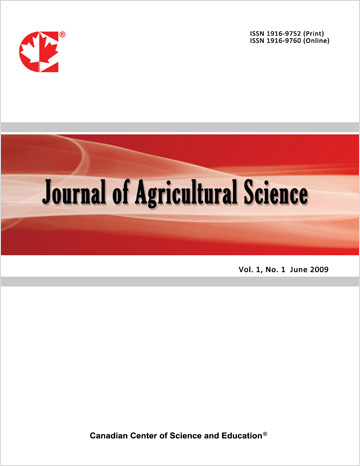Trend Analysis of Four Cycles of National Cassava Mosaic Disease Surveys in Ghana
- Allen Oppong
- Zippora Appiah Kubi
- Linda A. Abrokwah
- Esther A. Annang
- Esther A. Marfo
- Rachel Agyemang
- Ruth N. A. Prempeh
- Augustine Agyekum
- Joseph N. L. Lamptey
- Justin S. Pita
Abstract
Cassava is an important staple crop in Africa. In Ghana, it is the number one root crop consumed by over 30 million people. It supports the livelihoods of farmers, stakeholders in the cassava value-chain and serves as raw material for industries. Despite its critical role, the crop faces substantial yield losses due to cassava mosaic disease (CMD) accounting for yield losses of more than 20% depending on the time of infection and the viral strain combinations. With the emergence of virulent strains of the CMV, routine surveys are necessary to ascertain the prevalence of CMD and their whitefly (Bemisia tabaci) vector in farmers’ fields. Field surveys were conducted in 2015, 2016/2017, 2019/2020 and 2022 using a harmonized sampling protocol developed by the Central and West Africa Virus Epidemiology for Roots and Tuber crops (WAVE) for food security. Diseased samples with varying symptoms collected were assayed using polymerase chain reaction (PCR) techniques. Whiteflies were collected from sampled plants within the top 5 uppermost leaves from five plants/field and then maintained in Eppendorf tubes containing 90% alcohol for laboratory analysis. In all, 1,113 fields were assessed as follows: 215, 178, 320 and 400 for 2015, 2016/17, 2019/20 and 2022 surveys respectively. African cassava mosaic virus (ACMV) and East African cassava mosaic virus (EACMV) strains were identified either singly or in mixed infection from samples collected with varying intensities during the periods of surveys. Whitefly counts from sampled plants showed similar trends of varied intensities. Disease severity and incidence also varied with the least disease incidence and severity being encountered in the 2022 survey suggesting success for the advocacy for the adoption of improved healthy planting materials.
- Full Text:
 PDF
PDF
- DOI:10.5539/jas.v17n7p41
Journal Metrics
- h-index: 67
- i10-index: 839
- WJCI (2023): 0.884
- WJCI Impact Factor (2023): 0.196
Index
- AGRICOLA
- AGRIS
- BASE (Bielefeld Academic Search Engine)
- Berkeley Library
- CAB Abstracts
- ChronosHub
- CiteSeerx
- CNKI Scholar
- Copyright Clearance Center
- CrossRef
- DESY Publication Database
- DTU Library
- e-Library
- EBSCOhost
- EconPapers
- Elektronische Zeitschriftenbibliothek (EZB)
- EuroPub Database
- Excellence in Research for Australia (ERA)
- Google Scholar
- Harvard Library
- IDEAS
- iDiscover
- Jisc Library Hub Discover
- JournalTOCs
- KindCongress
- LIVIVO (ZB MED)
- LOCKSS
- Max Planck Institutes
- Mendeley
- MIAR
- Mir@bel
- NLM Catalog PubMed
- Norwegian Centre for Research Data (NSD)
- Open J-Gate
- OUCI
- PKP Open Archives Harvester
- Polska Bibliografia Naukowa
- Qualis/CAPES
- RefSeek
- RePEc
- ROAD
- ScienceOpen
- Scilit
- SCiNiTO
- Semantic Scholar
- SHERPA/RoMEO
- Southwest-German Union Catalogue
- Standard Periodical Directory
- Stanford Libraries
- SUDOC
- Swisscovery
- Technische Informationsbibliothek (TIB)
- Trove
- UCR Library
- Ulrich's
- UniCat
- Universe Digital Library
- WorldCat
- WRLC Catalog
- Zeitschriften Daten Bank (ZDB)
Contact
- Anne BrownEditorial Assistant
- jas@ccsenet.org
